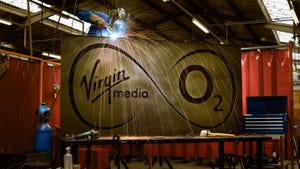Ericsson flexes 5G muscle with 5Gbps demo
In a live, over-the-air demonstration of pre-standard equipment, the Swedish company achieved 5Gbps throughput in the 15 GHz frequency band using advanced MIMO technology at its lab in Kista, Sweden.
July 2, 2014

Although 5G technologies are still far from standardisation, the growing maturity of LTE means vendors are already building up hype for the next generation of networks. Expecting Japanese carrier NTT Docomo and South Korea’s SK Telecom to be early adopters – Docomo has already tested 5G technology – Ericsson has been showing off its 5G developments to executives from both operators this week.
In a live, over-the-air demonstration of pre-standard equipment, the Swedish company achieved 5Gbps throughput in the 15 GHz frequency band using advanced MIMO technology at its lab in Kista, Sweden.
Ericsson forecasts that 85 per cent of North American mobile subscriptions will be on LTE by 2019, with such a high penetration suggesting this could be one of the first regions to adopt 5G, although it is also acknowledged that Japan and South Korea are likely to be early adopters with LTE subscription penetration already reaching over 30 per cent in Japan and over 50 per cent in South Korea.
Ericsson said its 5G network development activity is focused on new antenna technologies with wider bandwidths, higher frequencies and shorter transmission time intervals, as well as small cells in a heterogeneous network environment, new frequency bands including 15GHz and high-capacity backhaul transmission.
Sathya Atreyam, Research Manager Wireless Network Infrastructure at analyst IDC, said that although the standards are still nascent, building a certain amount of expectation is par for the course: “Though the standard is not yet defined, 5G has already evolved from a technology vision to a network and business planning consideration for operators. It is important for network equipment vendors — like Ericsson — to demonstrate the potential of 5G as a means to begin creating a demand in the communications ecosystem,” he said.
Ericsson, like many others, believes that M2M will be a key feature of 5G connectivity, with capillary networks and all sorts of sensors featuring heavily in the future. So in related news, the Swedish vendor has launched a crowdsourcing project to map ICT-related initiatives which empower people and businesses across Northern Europe and Central Asia.
The 7th annual LTE North America conference is taking place on the November 18th-20th 2014 at the InterContinental Hotel, Dallas, Texas, USA. Click here NOW to download a brochure for the event.
The aim is to collect up-to-date and locally relevant information about the cities that will then serve as a tool to explore the opportunities associated with what Ericsson has dubbed the Connected society”.
The project enables and encourages citizens to participate by sharing location-based information about the ways technologies are used in their cities and neighbourhoods. Currently the map covers 22 countries and allows contributions to a variety of activities, such as public services, healthcare, education, and more.
Charlotta Sund, Head of Region Northern Europe and Central Asia, said: “This project encompasses our ambitious effort to collect location-based information about ICT-based initiatives implemented in the cities. We believe that the benefit of this interactive map will extend way beyond sharing the information; it will serve as a tool to explore ever-evolving opportunities associated with the connected world.”
The City Index interactive tool makes index information available online environment that allows a flexible display of the total information as well as selected data sets or perspectives on each city.
About the Author
You May Also Like










.png?width=300&auto=webp&quality=80&disable=upscale)


_1.jpg?width=300&auto=webp&quality=80&disable=upscale)